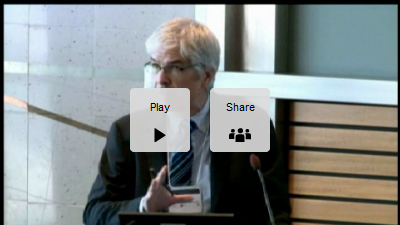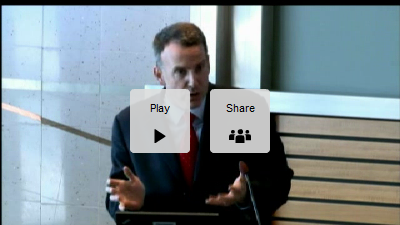In the paper sessions, presenters discuss various aspects of the process of urbanization. Vernon Henderson (London School of Economics) analyzed the links between climate and urbanization in African countries, showing how drier conditions foster urban population growth and an increase in both urban and rural incomes only in the few places likely to already have an urban industrial base. Rémi Jedwab (George Washington University) presented a theory of poor and rich megacities where cities may grow “too fast,” causing population growth and urban poverty to reinforce one another.

Video of 2nd Keynote Address by Paul Romer (Professor of Economics, NYU Stern School of Business and Director of the Urbanization Project). Watch the video.
Other presenters focused on hindrances that prevent efficient urbanization. Gilles Duranton (Wharton) showed how facilitating efficient factor allocation—in the present case, land in India—could potentially have strong economic impact. Other presenters insisted on the links between governance and urbanization: Harris Selod (World Bank) described contexts in which cities can grow informally over time because of deficient property right systems unaffordable to a large fraction of the population, while Quoc-Anh Do (Sciences Po) explained how geographic isolation of capital cities can be a symptom and an enabler of misgovernance. Paul Carrillo (George Washington University) then discussed how better regulations can help countries reduce the negative externalities associated with urbanization, whether car pollution or crime.
Impact evaluations also highlighted the impact of large transportation infrastructure investments in developing countries. Ejaz Ghani (World Bank) showed how a large highway investment in India, the Golden Quadrilateral Project, improved spatial sorting to the extent that companies were able to relocate out of megacities. Maarten Bosker (Erasmus) examined the impact of relaxing migration restrictions and highway construction on urbanization and local development in China, concluding that “real income depends on market access: places that are better connected urbanize faster.” Nathaniel Baum-Snow (Brown) also focused on recent transport infrastructure investment in China and showed that improved access to domestic markets increased regional GDP, whereas increased access to international markets promoted population growth.
Discussants Somik Lall (World Bank), Diego Puga (CEMFI) and Paolo Avner (World Bank) highlighted the need to better understand the contexts in which urbanization may sometimes be a symptom of underdevelopment, and called for improved methodologies to measure the actual impact of policies on net employment creation (as opposed to simply relocation of activities).The closing session of the conference emphasized the progress that has been achieved in the field over the last 20 years, and included an in-depth discussion of the future of urbanization and poverty research. Participants agreed that many policy questions remain unanswered. Gilles Duranton (Wharton) called for further research on how urbanization without industrialization will unfold. Marianne Fay (World Bank) encouraged those attending to consider urbanization in terms of the impact that climate change will have on vulnerable people in developing countries, and to understand changing demographics. Attendees looked forward to addressing these and other issues at next year’s conference.
This conference was organized and supported by:




